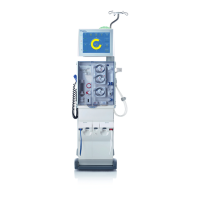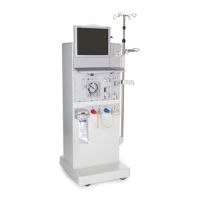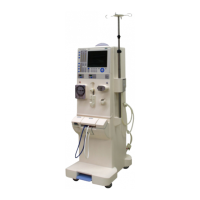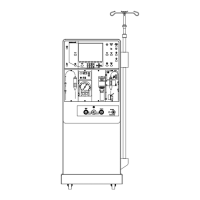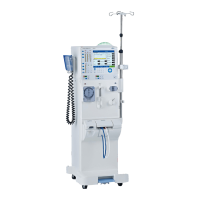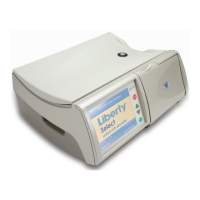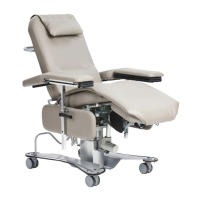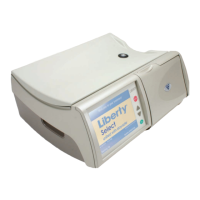Chapter 7: Functional description
Fresenius Medical Care multiFiltrate IFU-EN-UK 15A-2015 7-23
7.3.2.3 Control of systemic ionised calcium
Necessity of calcium
substitution
During the treatment, a proportion of the calcium-citrate complexes as
well as a proportion of the ionised calcium pass from the patient’s blood
into the filtrate and are thus removed from the patient.
To compensate for this calcium loss, calcium solution is infused into the
venous branch of the extracorporeal blood circuit. This is done with the
calcium pump which is integrated in the device system.
Avoiding hypo- and
hypercalcaemia
The substitution of calcium must be adapted to the patient's needs to
avoid hypo- or hypercalcaemia.
Checking the calcium
substitution
Adequate calcium substitution is determined by regular checks of the
systemic ionised calcium.
To collect the blood sample for checking the systemic ionised calcium,
observe the instructions for taking a sample / systemic blood sample
(see chapter on page 7-20).
Unless clinically contraindicated, the systemic ionised calcium values
should be within the normal range.
Required calcium dose The calcium dose is defined as the volume of calcium ions (in mmol)
infused per liter of filtrate produced. In Ci-Ca CVVHD, the calcium dose
(displayed as calcium / filtrate ratio) can be adjusted within a range of
0.0 to 3.0 mmol/l. With Ci-Ca postCVVHDF, the calcium dose equals
the overall calcium infusion, i.e., the sum of calcium infused with the
calcium solution and the calcium in the substitution fluid, in relation to
the filtrate flow. Unlike with Ci-Ca CVVHD, very small values for the
calcium dose cannot be set for Ci-Ca postCVVHDF since it is essential
that calcium is infused with the substitution fluid. In particular, a calcium
dose of 0.0 mmol/l can never be set for Ci-Ca postCVVHDF. The upper
configuration threshold is identical at 3.0 mmol/l.
Based on theoretical estimations and empirical experience, an average
calcium dose of approximately 1.7 mmol/l is required to maintain the
systemic ionised calcium within the normal range or within the target
range prescribed by the physician. This value can, however, vary from
patient to patient, and even fluctuate for the same patient during the
course of treatment. Accordingly, it is necessary to verify the effect by
measuring systemic ionised calcium and then adjust the calcium dose
as required.
The direct coupling of the calcium dose to the filtrate flow has the effect
that the calcium substitution is automatically adjusted to the efficacy of
the treatment. This means, for example, that in case of an elevated
calcium removal caused by an increase of the dialysate flow, the
calcium substitution is automatically increased.
In Ci-Ca CVVHD and Ci-Ca postCVVHDF, the concentration of the
calcium solution is a major parameter when calculating the infused
calcium flow from the filtrate flow and the set calcium dose. In Ci-Ca
postCVVHDF, the calcium concentration of the substitution fluid infused
in postdilution is also considered in the calculation.
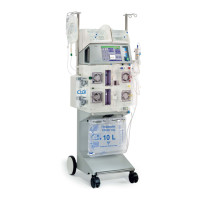
